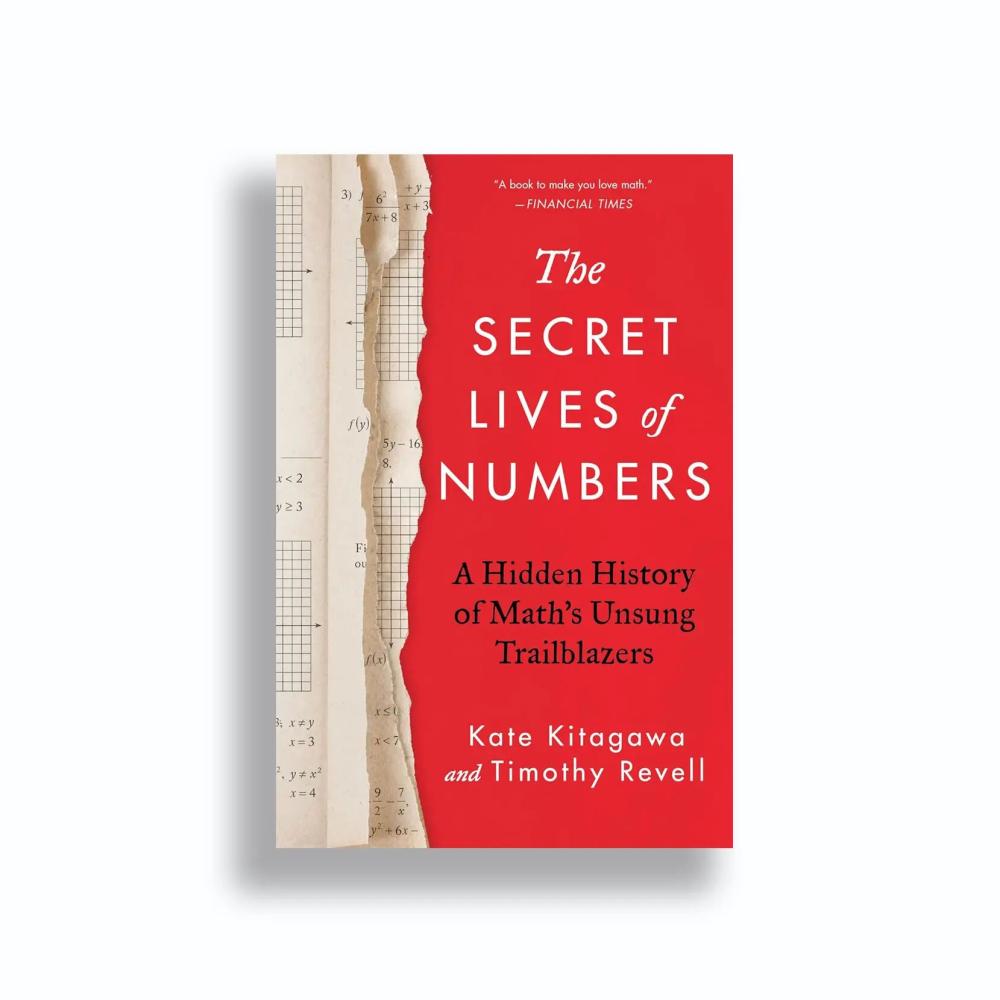Sunday Science: The Fascinating Story of Math in a Book You Can Actually Understand

THE SECRET LIVES OF NUMBERS: A Hidden History of Math’s Unsung Trailblazers, by Kate Kitagawa and Timothy Revell
William Morrow | 310 pp. | $32.99
Mathematics has been described as the longest continuous human thought. This thought is typically said to have been held most effectively by Western mathematicians and mainly by men. The narrative supporting this notion regards mathematics as having its origins in ancient Greece, and the mathematics done in other early cultures as peripheral — barbarian science or “ethnomathematics,” even though non-Western thinkers often practiced math that was more advanced than what Europeans knew.
In “The Secret Lives of Numbers,” Kate Kitagawa, a mathematics historian, and Timothy Revell, a science writer, intend by reasoned and scholarly means to overthrow the “assumption that the European way of doing things is superior.”
Their book begins with prehistoric counting methods (one of the earliest was based on the number 60, unlike our own base-10 system) and goes on to the fourth-century Alexandrian woman Pandrosion, a geometer who solved the difficult problem of doubling the volume of a cube (ancient mathematicians lacked the algebra that makes this straightforward), and Hypatia, who wrote mathematical commentaries, including on Apollonius’ “Conics,” an investigation of circles, ellipses and other shapes. Kitagawa and Revell speculate that Johannes Kepler, who described the orbits of the planets in the 17th century, may have been influenced by her contributions.
Overlooked or forgotten accomplishments by women mathematicians are a recurring theme. There is a chapter on Sophie Kowalevski, a 19th-century Russian who became the first woman math professor, in Sweden. Employing methods that no one before her had thought of using, Kowalevski solved a recalcitrant problem involving the mathematics of a spinning top. The French Academy of Sciences heard of her work and, hoping to have her submit it, framed its annual prize in 1888 around the spinning top problem. Kowalevski missed the deadline, and so the academy extended it by three months. When the judges gave her the prize, they increased the award money by nearly half, a rare example of a woman mathematician being favored by and above male colleagues.
Kitagawa and Revell devote a chapter to the House of Wisdom, a kind of exalted library and school in eighth-century Baghdad where Muhammad ibn Musa al-Khwarizmi, often referred to as the father of algebra, did some of his work, and they highlight the women, called “human computers,” at Harvard in the late 19th century who refined the application of light wavelengths to classify stars. Toward the end of the book, the authors discuss the glorious, god-soaked and essentially self-taught early-20th-century Indian mathematician Srinavasa Ramanujan, whose suppositions were so profound and wide-ranging that their implications are still being considered.

As well as knowing history, Kitagawa and Revell are expert explainers of mathematics. Anyone who has never been sure what an algorithm is can understand the concept here, and their account of calculus is so lucid and compact that I found it thrilling. It is with calculus, though, that they slip, perhaps, into something like advocacy.
The invention of calculus is traditionally attributed to Isaac Newton and Gottfried Leibniz, working independently in the 17th century. However, Kitagawa and Revell write that “it is wrong to claim that the origins of calculus lie with either Leibniz or Newton, as one thing is certain: Neither of them got there first.” Instead, they say, calculus was brought into being in India in the 14th century by a mathematician named Madhava. Madhava taught at a school in Kerala and made use of procedures that are subordinate elements of calculus.
Kitagawa and Revell cite the Indian mathematician George Gheverghese Joseph, who wrote about the matter in a 2009 book, “A Passage to Infinity.” Joseph, they say, “argues that there was a pathway for knowledge from India to the West,” which suggests that “Leibniz and Newton could have been influenced by the school in Kerala.”
The claim is based in part on the possibility that Jesuits brought Madhava’s work to Europe, but in his book Joseph writes that a “painstaking trawl of the mass of manuscripts” has provided “no direct evidence of the conjectured transmission.” Perhaps, he suggests, European sailors used Madhava’s work in navigation. It might then have been absorbed into European practices without anyone knowing, centuries later, where it had come from. This would be a case of someone who told someone who told someone and so on, more than 600 years ago, a circumstance virtually impossible to substantiate. On the other hand, novel discoveries rarely stay where they were made.
Madhava’s work serves to make the point that complex mathematics belongs to all people and all cultures in all periods, and that to dismiss historical work as ethnomathematics is to express a prejudice. When one acknowledges the intellectual reach of these ancient achievements and the love of pure thought they suggest, it leads one to wonder where else we might look for illumination and what we might find.
Alec Wilkinson is the author of “A Divine Language: Learning Algebra, Geometry, and Calculus at the Edge of Old Age.”

How Colorful Ribbon Diagrams Became the Face of Proteins
Yasemin Saplakoglu
Quanta Magazine
Proteins are often visualized as cascades of curled ribbons and twisted strings, which both reveal and conceal the mess of atoms that make up these impossibly complex molecules.
August 23, 2024
